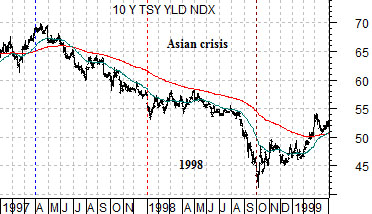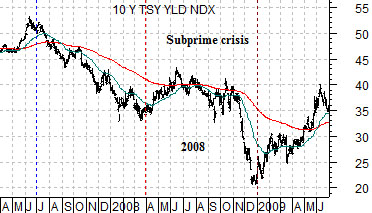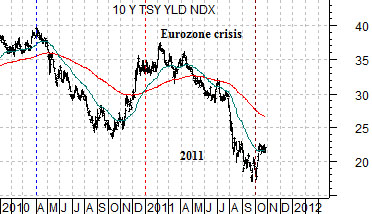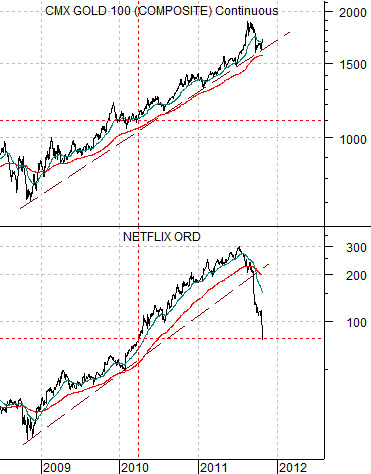There have been three ‘crises’ since the late 1990’s. There was the 1998 crisis that centered around capital fleeing south east Asia, LTCM, and then on to Russia and Brazil. Next up was the U.S. subprime crisis that culled the U.S. financial sector in 2008. At present we are enjoying the day-to-day uncertainties regarding Greece with the prospect of the issue spreading through the rest of the PIIGS.
Which leaves us at present with a rather optimistic perspective.
Crises don’t happen ‘out of the blue’. Crises aren’t the cause but are instead the result. Crises do not occur at the start of a trend but are typically what happens at the end of a trend. Crises are difficult to forecast in real time so we fully expect that the next time this happens- and, given the speed and power of capital flows it is almost a given that there will be another crisis or two over the balance of this decade- we won’t see it coming until it is much too late.
Crises are the exclamation point at the end of 15 to 18 months worth of falling long-term Treasury yields. Which is good news and bad news.
The charts at below show the yield index for 10-year U.S. Treasuries. The top chart is from 1997 into early 1999, the middle chart from 2008 into 2009, and the lower chart from 2010 to the present time period.
In both 1998 and 2008 the ‘crisis’ occurred during the final quarter of an 18-month decline for yields. In other words from peak to bottom long-term U.S. interest rates fell for 18 months with the panic associated with the crisis squeezed into the final two or three months.
The end of the crisis was marked by a rebound in long-term yields.
The chart below right shows that from the yields peak at the end of March in 2010 to the bottom at the end of September this year… 18 months elapsed with the bulk of the pressure coming during this year’s third quarter.
The bad news is that crisis trends tend to run through the quarter so if we aren’t done already we will have to wait for January or April of 2011. The good news is that it very much appears that we made the recovery pivot at the start of this month and with yields on the rise we won’t have to worry about the next crisis until some time around 12 to 15 months after long-term interest rates turn lower from the next peak.



The markets have been absolutely annihilating some of the strongest momentum stocks in recent weeks. We have been pondering what this might mean.
Just below is a chart of gold futures and the share price of NetFlix (NFLX).
Our argument has been that if gold prices break below 1600 the next logical support level lies down between 1100 and 1200. The point, of course, is that NetFlix disappointed the markets while gold has yet to do so. But it does make for an intriguing comparison.
Next is a chart of Hong Kong’s Hang Seng Index and the ratio between Amazon (AMZN) and Wal Mart (WMT).
The idea is that the Hang Seng Index and AMZN/WMT ratio follow the same basic trend. The problem this year has been that the Hang Seng has broken lower while AMZN appeared to be bullet proof. Until yesterday.
Last is a comparison between Canadian yoga-wear company Lululemon (LULU) and Japanese manufacturer Panasonic (PC).
The argument here is that the trends are almost perfectly inverse. The weaker the Japan/consumer cyclical trend the more attractive the markets appear to have found any company with earnings momentum. When PC was outperforming the broad market through 2008 the share price of LULU was declining but as the PC/SPX ratio turned lower in 2009 the share price of LULU shifted into a parabolic rise.
The point We can’t be positive but… our sense is that the break down by NetFlix, the price crack for Amazon, and recent choppy action for Lululemon suggests that we are in the process of a change in the direction of the flow of capital away from ‘growth at any price’ towards new sectors that are starting to emerge phoenix-like from the ashes of investor neglect and disdain.






